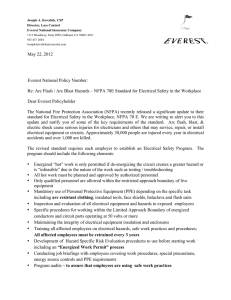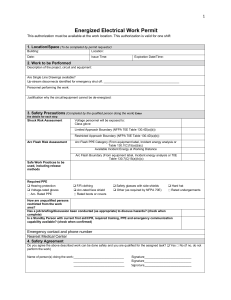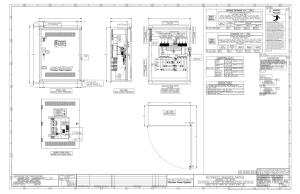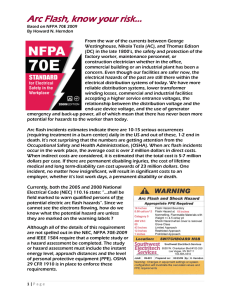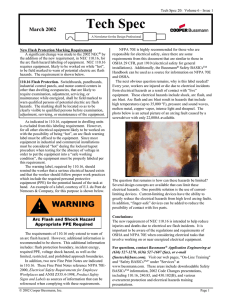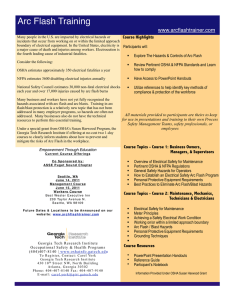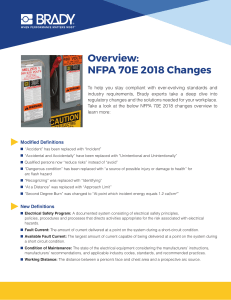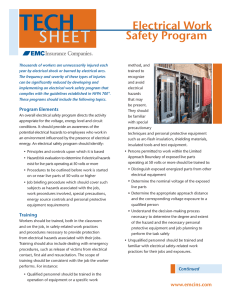Arc Flash / Arc Blast Hazards
advertisement
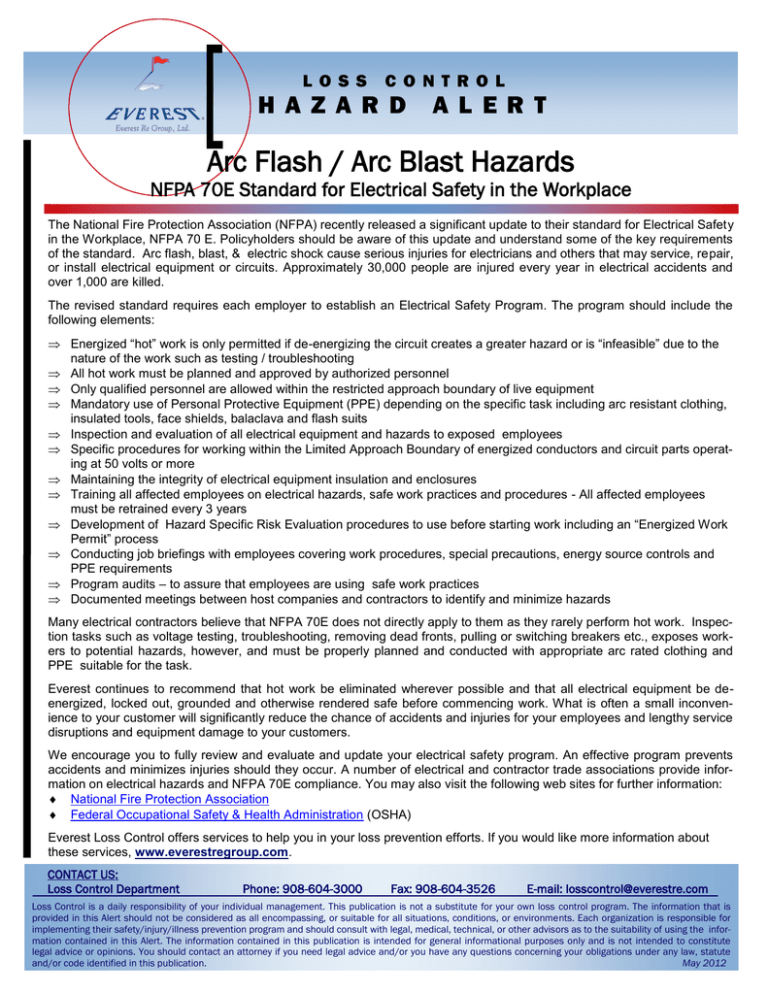
LO S S C O NT RO L H AZARD AL ER T Arc Flash / Arc Blast Hazards NFPA 70E Standard for Electrical Safety in the Workplace The National Fire Protection Association (NFPA) recently released a significant update to their standard for Electrical Safety in the Workplace, NFPA 70 E. Policyholders should be aware of this update and understand some of the key requirements of the standard. Arc flash, blast, & electric shock cause serious injuries for electricians and others that may service, repair, or install electrical equipment or circuits. Approximately 30,000 people are injured every year in electrical accidents and over 1,000 are killed. The revised standard requires each employer to establish an Electrical Safety Program. The program should include the following elements: Energized “hot” work is only permitted if de-energizing the circuit creates a greater hazard or is “infeasible” due to the nature of the work such as testing / troubleshooting All hot work must be planned and approved by authorized personnel Only qualified personnel are allowed within the restricted approach boundary of live equipment Mandatory use of Personal Protective Equipment (PPE) depending on the specific task including arc resistant clothing, insulated tools, face shields, balaclava and flash suits Inspection and evaluation of all electrical equipment and hazards to exposed employees Specific procedures for working within the Limited Approach Boundary of energized conductors and circuit parts operating at 50 volts or more Maintaining the integrity of electrical equipment insulation and enclosures Training all affected employees on electrical hazards, safe work practices and procedures - All affected employees must be retrained every 3 years Development of Hazard Specific Risk Evaluation procedures to use before starting work including an “Energized Work Permit” process Conducting job briefings with employees covering work procedures, special precautions, energy source controls and PPE requirements Program audits – to assure that employees are using safe work practices Documented meetings between host companies and contractors to identify and minimize hazards Many electrical contractors believe that NFPA 70E does not directly apply to them as they rarely perform hot work. Inspection tasks such as voltage testing, troubleshooting, removing dead fronts, pulling or switching breakers etc., exposes workers to potential hazards, however, and must be properly planned and conducted with appropriate arc rated clothing and PPE suitable for the task. Everest continues to recommend that hot work be eliminated wherever possible and that all electrical equipment be deenergized, locked out, grounded and otherwise rendered safe before commencing work. What is often a small inconvenience to your customer will significantly reduce the chance of accidents and injuries for your employees and lengthy service disruptions and equipment damage to your customers. We encourage you to fully review and evaluate and update your electrical safety program. An effective program prevents accidents and minimizes injuries should they occur. A number of electrical and contractor trade associations provide information on electrical hazards and NFPA 70E compliance. You may also visit the following web sites for further information: National Fire Protection Association Federal Occupational Safety & Health Administration (OSHA) Everest Loss Control offers services to help you in your loss prevention efforts. If you would like more information about these services, www.everestregroup.com. CONTACT US: Loss Control Department Phone: 908-604-3000 Fax: 908-604-3526 E-mail: losscontrol@everestre.com Loss Control is a daily responsibility of your individual management. This publication is not a substitute for your own loss control program. The information that is provided in this Alert should not be considered as all encompassing, or suitable for all situations, conditions, or environments. Each organization is responsible for implementing their safety/injury/illness prevention program and should consult with legal, medical, technical, or other advisors as to the suitability of using the information contained in this Alert. The information contained in this publication is intended for general informational purposes only and is not intended to constitute legal advice or opinions. You should contact an attorney if you need legal advice and/or you have any questions concerning your obligations under any law, statute and/or code identified in this publication. May 2012

